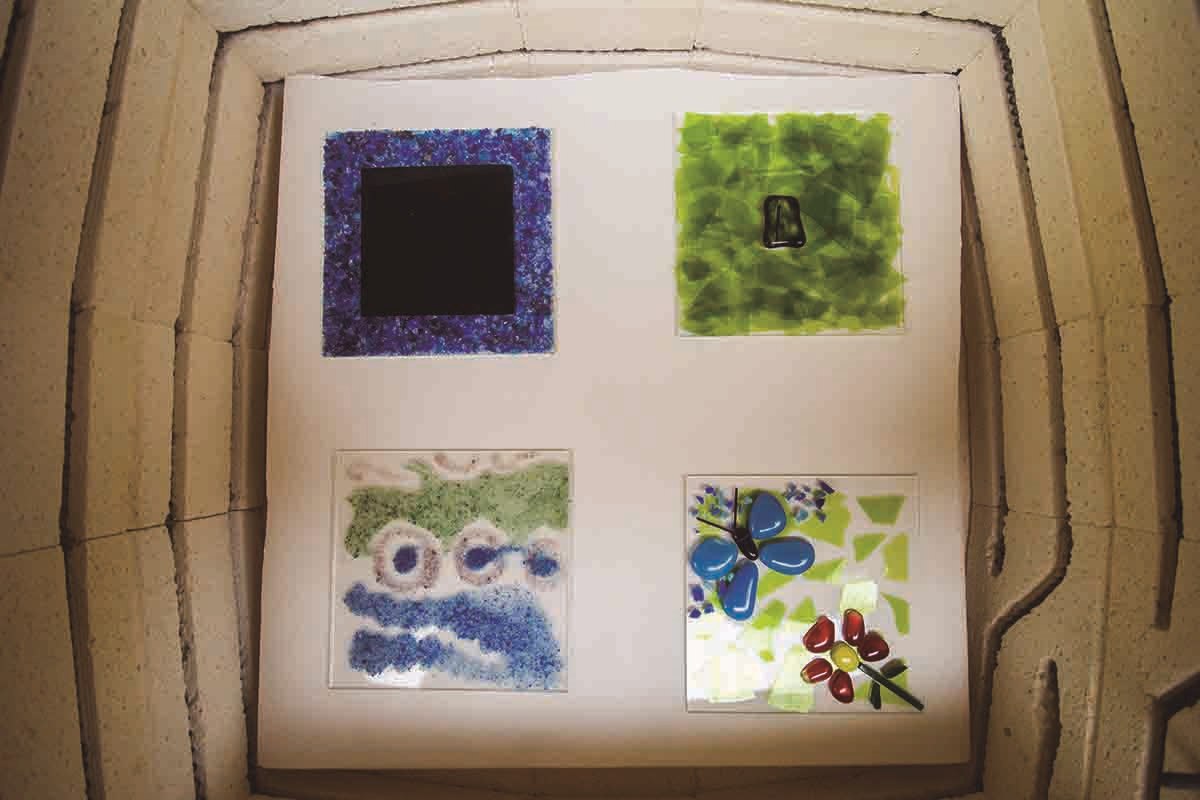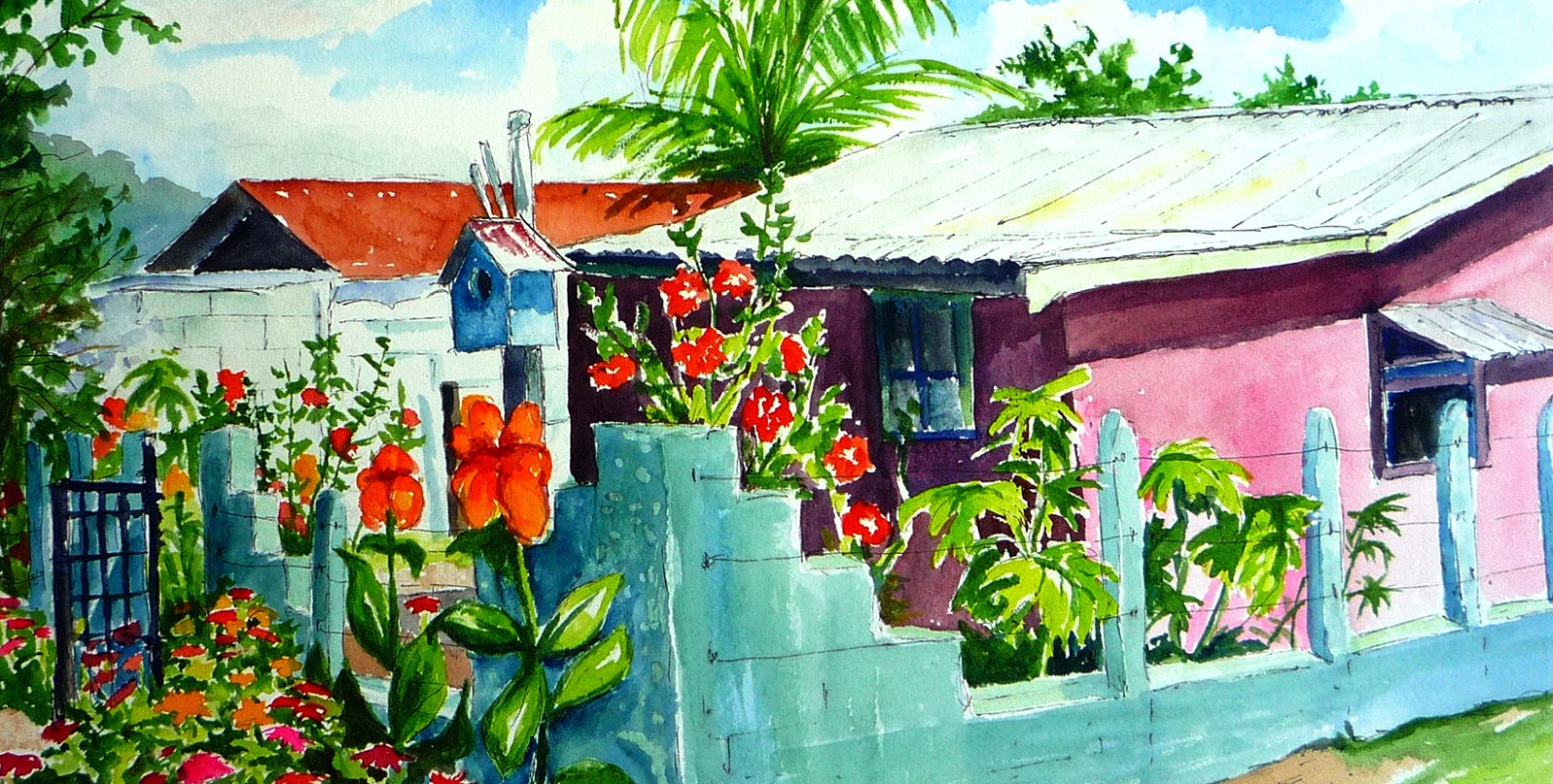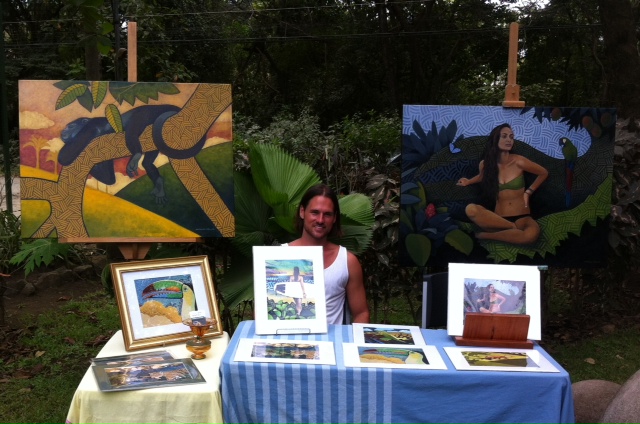
Hmmm. So many options, so many choices, so many possible combinations. Creative juices flow as we sift through buckets of glass “puddles”, tubes of glass “spaghetti”, and jars of different colors of crushed glass. All are options to add color, texture and designs to what we are about to make, and in this too, we have a choice— either a six-inch glass plate or a candleholder.
We all opt to make a plate. This is when it gets really fun. Occasionally we glance at what the others are doing and solicit or offer suggestions.
Roy Myers is going for an eclectic modern art look, absolutely filling his plate with puddles, which are small pieces of glass in random shapes and colors, but in the end he decides that less is more and narrows it down to just one puddle in the center of the plate, on a background of thin overlapping flakes of light green glass.
“I love coming here,” confesses Roy, who has been taking glass fusing classes from Lavae Aldrich in Samara for about a year. “After all these years I found out that I do have a creative side of me.”
Most of the pieces he has made he ends up giving away to friends when they come to visit, telling them that it is a true souvenir.
Arwen Ross takes a completely different approach. This is her first class and she is thrilled at the process of cutting glass, pressing firmly down and rolling the glass-cutting tool across pieces of glass to cut them to size, a task that is quite a bit harder than it looks since it requires the right amount of pressure. She sprinkles bits of crushed glass all around the edges of her plate and then places a square of dark glass centered in the middle. This inner square is so dark it looks black, but when the plate is finished it will be dark green.
“I was looking for something artistic to do on a rainy day,” Arwen remarks. “It was fun. I want to come back and finish making a set of plates.”
I, on the other hand, start sorting through all the puddles to see what shapes I might make out of them. I had spotted a butterfly stencil hanging on the wall but Lavae explained to me that the stencils can only be used with powdered glass, which isn’t an option for this project, so instead I look for a way to make shapes out of the puddles. I find a light blue one that looks to me like the head and body of a peacock and I arrange other blue-green puddles around it to form feathers. Then I pick out other blue puddles to form a butterfly. But I decide that the peacock and the butterfly don’t go together, so it’s time to make another choice. I decide on the butterfly, carefully laying it out in one corner of the plate, and then I make a red flower in the opposite corner, breaking off a piece of green “spaghetti” to make a stem for the flower.
We each carefully carry our plates over to the kiln, where they will be heated up to 1500 degrees Fahrenheit so that all of the glass melts and becomes completely liquid. As it cools, which will take about 24 hours, the glass fuses into one solid piece. Then the kiln will be fired up again, this time to 1200 degrees in a clay mold so that it slumps into the mold and takes on the curved form of the plate. If we had opted to make a candleholder, the glass would be draped over a metal cup so it would drape down over the cup to take on the shape of a votive. Then the glass must cool again for another 24 hours.
The most frustrating part is having to wait three days to see the final product.
Lavae started working with glass about 10 years ago, but when she moved to Costa Rica she had more time to dedicate to the art. Some of her pieces are on sale at the Dragonfly and at Samara Organics. Two years ago she began offering classes to share her passion for glass with others.
“I love it. I’m not a teacher but I love seeing what people do, seeing people that think they aren’t artistic come up with really cool stuff,” she related.
Glass Fusing Classes
Instruction can be offered in English or Spanish. Classes should have a minimum of two people and are limited to a maximum of five people because of the size of the studio. Children eight or older are welcome with supervision.
The cost is 10,000 colones or $20 per person. Plan about two hours to make the glass piece and be aware that it takes two to three days to fire the piece before it is ready to take home.
Class schedules are updated on Lavae’s blog, www.geckoglass.wordpress.com, and always require reservations. During low season, classes are offered on request. Call 8977-1576 or email [email protected] to make a reservation.







Comments